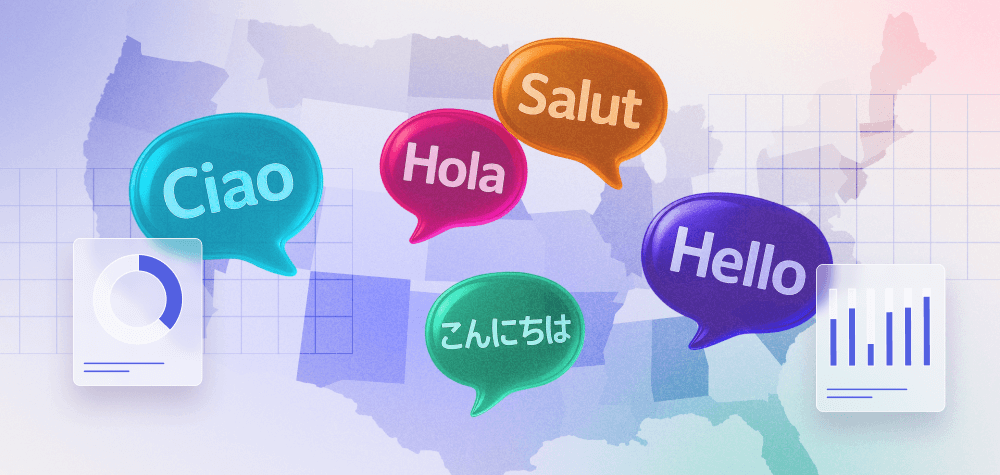Since the dawn of digital advertising, the industry has promised something that traditional channels could never quite deliver: total measurability. Every click, every impression, every conversion (at least in theory) could be tracked, analyzed, and optimized to improve ROI over time.
In reality, measurement in digital advertising has never been that simple. And over the last few years, it has only gotten harder. In 2025, even though we’ve reached a point of relative stabilization after years of upheaval, measurement is still far from a solved problem.
The ongoing challenges of campaign measurement
In the early years of digital advertising, the steps toward holistic campaign attribution were slow and incremental, always struggling to keep pace with new channels and platforms, not to mention consumer behavior. Then, major setbacks hit. In 2021, Apple’s iOS 14 update curtailed access to the Identifier for Advertisers (IDFA), the device identifier assigned by Apple to track iOS users for customized advertising. Suddenly, deterministic tracking of verified individual users on mobile devices was no longer reliable at scale. Around the same time, browsers began tightening rules around third-party cookies, which had long been serving as the industry’s campaign targeting and measurement crutch. While cookies remain in play today, they were never a perfect solution, and their effectiveness continues to erode.
Today, the industry has largely reoriented itself around a reality where IDFA and third-party cookies can no longer underpin campaign measurement strategies. However, the complexity of consumer behavior creates ongoing challenges. People use multiple devices daily, often without a consistent login that ties their activity together. A single household may have several users sharing the same connected TV or tablet. On top of that, the rise of fragmented environments (e.g., apps, streaming, audio, and web) makes it difficult to follow a customer journey from exposure to conversion with confidence.
The Holy Grail of measurement is attribution: that elusive ability to tie an impression to a specific click or post-click activity. The pursuit of attribution sits at the heart of adtech, and measurement technology has evolved significantly over the decades to offer multiple solutions across channels. However, a cloud of uncertainty hangs over all these solutions.
A big part of that uncertainty stems from the self-attribution offered by today’s giant walled gardens. These ecosystem players attract tremendous levels of advertising spend by virtue of their massive owned and operated sites, but they also mix other external traffic sources into their supply as well, without offering complete transparency. The muddiness of this supply combined with the self-reported nature of the campaign results introduces a level of inaccuracy and bias to the attribution equation that can’t be solved.
Given the fog surrounding supply sources, marketers often try to compensate by focusing on segmentation and precise audience targeting, hoping the specificity of the inputs will yield greater understanding in the results. However, as they scrutinize their dashboards, they typically find it’s like flying a plane using GPS only. They understand where they’re headed directionally, but they can’t see the level of detail needed to ensure they’re reaching their desired destination as safely and efficiently as possible.
Given how important scale is within the digital advertising ecosystem, brands can’t avoid spending with the walled-garden titans, despite the attribution challenges. But there are additional layers they can add to their media buys to counteract the attribution murkiness of the walled gardens.
Finding possibilities in the complexity
This doesn’t mean measurement is impossible. What it does mean is that marketers must understand both the strengths and the limitations of the tools they use. Any campaign analysis involves a blend of hard data and well-grounded extrapolations. The key is knowing where the extrapolations are made and interpreting results in a way that reflects real-world customer behavior.
Visibility into both the audience and the supply is what ultimately enables a strong measurement and optimization loop. Marketers can’t rely on one without the other if they want attribution they can trust. Starting with mobile audiences provides the strongest foundation, because mobile signals are closer to the individual user than almost any other data source. When those audiences are paired with curated, transparent supply, advertisers gain a clearer view of what’s driving performance and the ability to optimize accordingly.
Of course, private marketplaces (PMPs) and curated supply often come at a premium compared to standard open-market inventory. But the additional cost is outweighed by the value they deliver. Better visibility into who is being reached and where the ad is running means advertisers can measure more accurately, optimize more effectively, and scale with greater confidence.
This approach reflects Start.io’s commitment to mobile-first curation. The company brings together more than 20 first-party mobile data signals with direct access to premium publisher supply, creating curated deals built for both performance and transparency. Mobile signals are collected in a privacy-compliant way and reflect real-time user behaviors, which gives them a level of accuracy that reaches beyond the device itself and provides a strong foundation for omnichannel campaigns.
The outcome is a measurable value. Campaigns can be tailored to precise geographies, demographics, and behavioral groups, then activated seamlessly through PMP availability across all major DSPs. From there, they can be fine-tuned throughout the campaign lifecycle. Investing in curated supply and mobile-first data might carry a higher price than standard inventory, but it ultimately delivers greater clarity in measurement and stronger campaign results.
Making Measurement Work in 2025 (and Beyond)
Campaign measurement has never lived up to the dream of perfect visibility. In 2025, it’s still a challenge, even as the industry stabilizes after years of disruption. But the value of measurement and being able to optimize performance remains undeniable.
By anchoring strategy in mobile data, diligently connecting the dots with tools like pixels, macros, and conversion tracking, and staying vigilant about interpreting results, advertisers can achieve clarity in a complex landscape.
Start.io is here to make that process easier, providing the mobile-first data and measurement solutions that help campaigns perform at their best.



